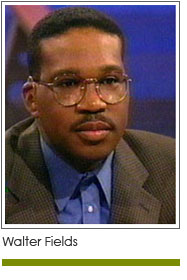 The 1963 March on Washington is best remembered for the collection of leaders who shared the speakers’ platform on the steps of the Lincoln Memorial. The roster included the “Who’s Who” of African-American civil rights leadership, including legendary figures such as Rev. Dr. Martin Luther King, Jr., Whitney Young, Roy Wilkins and student leader and now Georgia congressman John Lewis. Though Dr. King’s speech is the oratory most recalled from that hot summer day on the Mall, each speaker created the narrative for perhaps the most memorable and impactful social protest in our nation's history.
The 1963 March on Washington is best remembered for the collection of leaders who shared the speakers’ platform on the steps of the Lincoln Memorial. The roster included the “Who’s Who” of African-American civil rights leadership, including legendary figures such as Rev. Dr. Martin Luther King, Jr., Whitney Young, Roy Wilkins and student leader and now Georgia congressman John Lewis. Though Dr. King’s speech is the oratory most recalled from that hot summer day on the Mall, each speaker created the narrative for perhaps the most memorable and impactful social protest in our nation's history.
Just as significant as the individuals were the organizations behind the names. While the charisma and talents of individuals were on full display on August 28, 1963, what is all the more significant is that the institutional strength of the African-American community was evident by the masses assembled in the nation’s capital on that momentous day 50 years ago. The NAACP, the National Urban League, the Southern Christian Leadership Council, the Student Nonviolent Coordinating Committee, CORE and the Black Baptist conventions, evangelical churches, and Methodist denominations were the backbone of the civil rights movement. Had it not been for this institutional architecture there would not have been a March on Washington. No individual leader, including Dr. King, could persuade the type of outpouring that occurred or force the policy changes that resulted in the three years following the march. It was institutions that were principally responsible for the Civil Rights Act of 1964, the Voting Rights Act of 1965 and the Fair Housing Act of 1968.
We need to be reminded of the importance of institutions as we prepare for the commemoration of the Great March. Since the death of King, Young, Wilkins and Malcolm X, the African-American community has been at the mercy of charismatic leaders, all well-meaning, but lacking the organizational prowess of leadership of the past. The skill of a Whitney Young and a Roy Wilkins in leading large-scale institutions and staying focused on impacting real change is sorely underappreciated. As is the strategic talents of Dr. King and his humility that allowed him to surround himself with brilliant individuals who were his intellectual equal and unafraid of challenging him on points of tactics and substance. The closest approximation to Dr. King is Rev. Jesse Jackson and following Jackson it would be Rev. Al Sharpton. Jackson’s early success at reaffirming King’s latent economic justice agenda was eclipsed by his foray into electoral politics and personal challenges. Sharpton began in the King-Jackson mold but has morphed into a media centric advocate while holding onto vestiges of the 20th century civil rights model with his National Action Network. The NAACP and the National Urban League, under Benjamin Jealous and Marc Morial respectively, are being reimagined in the age of social media and have been thrust into the heat of battle by circumstances while still under construction. CORE has been lost for ages as Roy Innis took a rightward turn and became a platform for conservatives. And the Black church has mostly been MIA from many of the important debates of the day and the real work of transforming our community. There is no longer a perceived radical wing such as the Black Panther Party making demands upon the nation that forces policy makers to consider the “reasonableness” of “mainstream” Black demands, and speaks for the masses of Blacks pushed to the fringes of society.
Institutions can matter and they do matter. By sustaining institutions, agendas for social change can proceed long after leadership has left or died. Both the NAACP and the National Urban League provide continuity of message and demands for justice; and both serve as unavoidable points of reference for our nation on the unfinished business of full democracy. When we sustain institutions we sustain our ability to fight, our ability to wage the necessary long-term battles to secure rights and advance the collective prosperity of African-Americans. No individual leader has that power. History teaches us that lesson as we have experienced the individual prowess and conscience of the likes of a Frederick Douglass, Harriet Tubman, W.E. DuBois, Marcus Garvey, Paul Robeson, Mary McLeod Bethune and countless other courageous leaders who advanced the cause for justice. Despite their individual efforts and enormous talents, not one of them could produce the wholesale change in policy or law that improved the Black condition in America. Their individual contributions, however, were embraced and adapted in part or whole by organizations that then had the collective strength to force change.
The role of institutions in forging social change is something we should keep in mind as many of us converge on Washington to commemorate the 1963 march and reinvigorate the fight for justice and equality in America. While we admire the individual voices of resistance, groups like the NAACP, National Urban League, and the Southern Christian Leadership Conference matter. As do new efforts that rely on the new tools of communication and social networking to organize and mobilize our community. There will always be a need for those individuals who can frame issues, articulate the concerns of the masses, and draw attention to the needs of the community to inspire, cajole and encourage the rest of us to action. But strong institutions have changed and can change the very foundation of this nation.
Walter Fields is the Executive Editor of NorthStarNews.com













